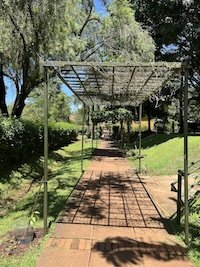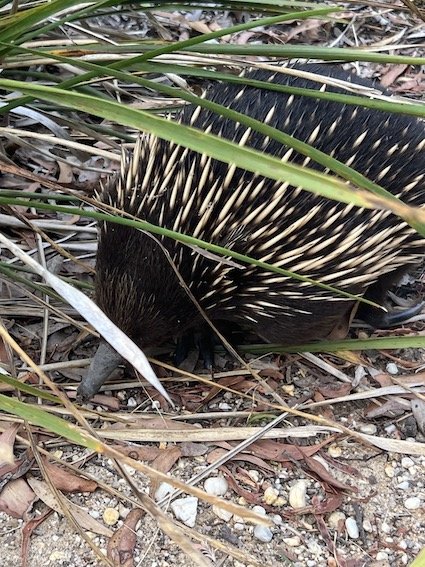There are many reasons why this is my favourite time of the year. They are both personal (I get to pack away my suitcase and be at home for an extended period … and there are Jacaranda’s flowering everywhere!) and professional. This is the time of year when some of the schools I partner with here in Australia take the time to deeply reflect on the school year behind them and begin to make plans for the year ahead. The thinking involved in this process is rich and complex. We need to be critical, reflective and creative and there is something about the time of year that seems give us permission to take it slowly, to sink in to the conversations we need to have and to give ourselves time to consider the work we do more deeply.
One of the processes we use to support our reflection is to gather data from every single child in the school and to use that data not only to help us understand the strengths and challenges of the year behind us but to inform the ‘map’ we develop for the year ahead. In a few of my partner schools, teachers have chosen to nothave a fixed scope and sequence or program of inquiry. The “units” developed with and for this year’s children are just that – for this year. We recognise that contexts, interests and needs change and we want to be responsive to that. We already have a ‘scope and sequence’ within the mandated curriculum – but we can be responsive and creative about the contexts we harness to uncover that curriculum.
I have used this process for several years now and with several schools. We ask children (in various ways) to respond to a range of questions including what they would love to learn more about in the year to come, what they think is important to learn about (often linked to current events or issues in the local and global community), what they have found meaningful and engaging this year, what they hope to explore in more depth or what they hope they will continue doing/learning in the year to come. We gather data about their concerns and their joys and the skills and dispositions (learning assets) they feel are their strengths and challenges. Every, single child contributes information (through 1-1 interviews, surveys, drawings, written responses) and each collaborative team of educators is given time to analyse, identify patterns and themes, reflect on what the data reveals and consider the implications on the journeys of inquiry that we tentatively project into the next school year. The seeds for the process were planted in me many years ago when I read the work of Professor James Beane, Michael Apple and of course the late Garth Boomer here in Australia. Negotiating curriculum with learners is certainly not a new idea but one that deserves revisiting.
I love what this process reveals. Although we gather reflections and feedback from kids throughout the year, there is something powerful about this big moment of pause. I see teams of teachers delighted, surprised, challenged and affirmed but, best of all, I see teachers really listening and noticing - intent on honouring the voices of children.
In many ways, the current climate is rife with confronting contradictions for educators. On the one hand, policies champion the value of learner agency, student voice, diversity and differentiation. On the other hand, the current breathless zeal for direct instruction (in literacy and numeracy at least) has prompted a return to one-size-fits-all programs and scripts that favour whole-class teaching, with little or no attention given to the context and needs of particular group of learners. Not only is student voice stifled but teacher voice is too. This is a time that is challenging us to re-examine our beliefs and understandings about children, pedagogy, curriculum and the purpose of school itself. And to know what we stand for and why.
One of the fundamental principles of inquiry as a stance is the right of the learner to participate in the decisions made about and for their learning and a belief in the expertise and insight of the educator to design for learning in response to observation and documentation. Does this mean children make all the decisions? Of course not! But it does mean that educators must choose to listen - and to consider ways they can design learning experiences that both honour interests and take children’s thinking further. This process supports the idea of ‘relational pedagogy’ which emphasises reciprocity, joint involvement, respect for children’s ideas and theories, and emphasises meaning making. (Hedges, 2022:125)
There is so much that is revealed in the process we work through. There are definitely some key differences across contexts that mean the maps we create are bespoke for each school. But in each school, staff noticed some recurring themes that naturally lent themselves to journeys of inquiry. And as I stood back to think about the data across schools, I found myself jotting down some of the overarching questions that framed the most prevalent interests we noticed. Children tend to ask more specific, focussed questions but the bigger conceptual ideas to which they connect can be summarised below:
What does it mean to be a friend? How can I build and sustain healthy relationships with others? How can I manage the challenges of relationships?
How can we care for other living things? How can I learn more about the natural world and the diversity of animals with which we share the earth?
What can we do about climate change? How will it affect us? Why don’t leaders do more to look after the planet?
What’s it like in other parts of the world? How do other people live? How are we the same and different?
How do things work? What makes things function? How are the different parts of things connected?
What does it mean to belong? How can I belong? How can I be brave and true to myself and be part
What dof a group?
How can I use my creativity to express my ideas? How can I become a more accomplished artist (visual/performing)
Why do wars happen? How can we keep ourselves safe? What can we do about conflict in our lives?
How can cope with the challenge of failure?
And, time and time again, children tell us that their learning is enhanced when:
Teachers are kind and make them feel seen
They get to go out of the school and have real, direct experiences in the world around them
They get to ‘do art’. – when they can design, make, create
They have time to play
They don’t feel rushed
They feel successful and proud of their learning and can share it with others
In a beautiful article (link below) Educator Jane Style challenges educators to tap into the ‘scholarship in the selves’ in contrast to the ‘scholarship on the shelves’. She invites us to consider that the curriculum walks in the door with the children, reminding us that they come to school with their ‘life texts’. Listening to the voices of hundreds of children over the last 2 weeks has been such an affirmation of this idea. And when we do listen, we are so often blown away by the depth and passion in children’s voices and are compelled to take them seriously. And it is not too great a challenge to weave those interests, passions and concerns into our plans and to find connections with the curriculum. This process helps bring the curriculum to life. As we acknowledge, for example, the sheer volume of children interested in and worried about their friendships and the navigation of their social world, we see connections to the health curriculum and the possibilities of linking to broader, transdisciplinary concepts such as connection, cause and effect, change and interdependence.
Inviting learner voice into the process of mapping for inquiry is energising, creative and connecting work. Each time we go through this process, I see teachers leave the room excited and uplifted about the prospect of the learning that lies ahead. I feel both their sense of agency together with a strong sense of connection to the children for whom we are designing the learning. And who have the right to be part of that process.
https://www.nationalseedproject.org/images/documents/Curriculum_as_Encounter.pdf
What role to children play in your designs for inquiry?
Just Wondering







